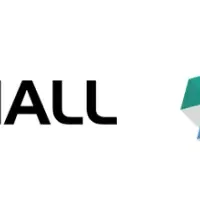
Significant Growth of DIY Home Improvement Market in Europe Driven by Increasing Enthusiasm for DIY Projects
The Expanding DIY Home Improvement Market in Europe
The DIY (Do-It-Yourself) home improvement market in Europe is set to witness a remarkable expansion, predicted to grow by USD 32.9 billion between 2025 and 2029. This growth is largely attributed to the surge in interest among homeowners towards DIY projects and the technological advancements within this sector. The compound annual growth rate (CAGR) is estimated at 3.2% during this period, indicating a robust future for DIY enthusiasts.
Driving Forces Behind the Growth
Rise of the DIY Movement
One of the main factors fuelling this market expansion is the growing DIY movement among European homeowners. The current housing market trends show an increase in home purchases and renovations, pushing individuals toward DIY solutions to personalize their spaces while also saving on costs. What was once seen as a niche hobby has now become a popular lifestyle choice driven by the desire for customization and a sustainable approach to home improvement.
E-commerce and Online Convenience
The shift to online shopping has transformed how consumers approach DIY projects. E-commerce platforms have made it easier for customers to find and purchase necessary tools, materials, and supplies from the comfort of their homes. This convenience, combined with a growing preference for eco-friendly products, reflects a broader societal trend toward sustainability.
Many DIYers now emphasize a zero-waste lifestyle, opting for sustainable materials that significantly reduce plastic use and avoid hazardous chemicals. As a result, DIY manufacturers are prioritizing safety and sustainability in their product lines.
Challenges in the Market
The DIFM (Do-It-For-Me) Sector
While the DIY market is booming, it is not without its challenges. The DIFM sector is gaining traction, as more consumers, especially younger generations and an aging population, are opting for professional assistance rather than tackling challenges themselves. This shift poses a challenge to traditional DIY retail sales.
Despite these challenges, DIY retailers are adapting by forming business-to-business (B2B) partnerships and enhancing their service offerings to cater to consumers who prefer professional help. Furthermore, as technological literacy increases, retailers are evaluating ways to bridge the gap between the DIY and DIFM markets.
Technological Innovations and AI
How AI is Reshaping DIY
Artificial Intelligence is also playing a vital role in the evolution of the DIY home improvement market. Major companies like Adeo, Kingfisher, and Travis Perkins are at the forefront of this innovation, implementing advanced mobile technologies for improved customer experiences. For example, Kingfisher has introduced upgraded mobile applications that facilitate in-store navigation, product location, and even augmented reality features that allow customers to visualize how furniture will look in their homes.
Moreover, AI-driven tools enhance operational efficiency, help in understanding consumer trends, and provide insights into customer preferences. This data can significantly aid in strategic decisions, solidifying the competitive edge for key players in the market.
Market Segments Driving Growth
The DIY home improvement market spans several key segments:
- - Lumber and Landscape Management: This segment leads market growth with homeowners engaged in renovations involving fencing, outdoor living spaces, and garden maintenance.
- - Decor and Indoor Gardening: Increasing consumer interest in aesthetics and environmental sustainability often fuels purchases in these categories.
- - Kitchen Improvements: Reflecting a trend among homeowners, particularly women, who significantly influence design choices, this segment is thriving.
- - Painting and Wallpaper: Who doesn’t want to give their home a fresh look? This continues to be a favorite among DIY enthusiasts.
Building and maintenance practices remain predominant areas where homeowners still seek professional assistance, particularly concerning plumbing and electrical tasks. By 2029, predictions show that the DIY market will have further adapted and evolved, embracing the interests of a more environmentally-conscious generation.
Conclusion
The DIY home improvement landscape in Europe is positioned for noteworthy growth driven by innovation, convenience of e-commerce, and a cultural shift toward personalization and sustainability. As the market continues to evolve, ensuring safety and sustainability in product offerings, while also navigating the competitive pressures from the DIFM sector, will be crucial for industry stakeholders. The future looks promising as both businesses and consumers alike embark on this journey of mutual growth and creativity.
Topics Consumer Products & Retail)










【About Using Articles】
You can freely use the title and article content by linking to the page where the article is posted.
※ Images cannot be used.
【About Links】
Links are free to use.